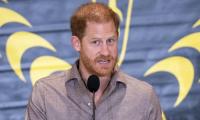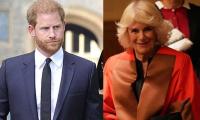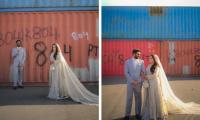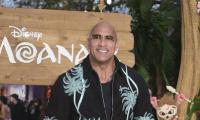When Yaqub was ten years old, he shared a two-room house with his family of six. With limited space at home, much of his time was spent on the streets. There were no public playgrounds or cricket or football fields for him to enjoy. The few local hotels and exclusive clubs for the elite were off-limits to him.
Now, at 40, Yaqub has a good job as a salesman in a shopping mall. His 10-year-old son, Rashid, and eight-year-old daughter, Saleema, enjoy a different reality, with numerous choices for recreation in local public spaces. There are two community centres where Rashid and Saleema can often be found playing chess, attending talks by learned individuals, or watching science documentaries -- their favourite pastime. Nearby playgrounds beckon them to play basketball, volleyball, football, cricket, and much more.
Several libraries in the area offer reading materials, internet access, multimedia presentations, and various other learning tools in a secure and pleasant environment. Neighborhood kids spend a lot of time there, benefiting enormously from the many opportunities provided.
Rashid and Saleema also enjoy spending time at the mall, where numerous public niches offer a range of activities. They learned skateboarding in a courtyard specifically designed for that purpose, situated in an office building. Yaqub recalls how he used to roam the streets, with no activities and opportunities on offer to him.
The transformation in Yaqub's city mirrors the success stories of other countries, where public and community spaces have played a crucial role in shaping civil society.
Singapore, known for its efficient urban planning, has integrated public spaces into its cityscape. Community centers are abundant, offering various activities from fitness classes to educational workshops. Parks and recreational areas are meticulously maintained, providing safe and clean environments for families to enjoy. This integration of public spaces has been pivotal in fostering a sense of In Denmark, libraries are not just places for borrowing books; they are vibrant community hubs. The Dokk1 library in Aarhus, for instance, offers a wide range of activities, from digital workshops to cultural events, attracting people of all ages. This model has shown that libraries can be powerful tools for promoting lifelong learning and community engagement.
Brazil’s 'Praca Victor Civita in Sao Paulo is a reclaimed public space that has been transformed into a vibrant park with cultural and recreational facilities. It hosts concerts, exhibitions, and fitness classes, making it a popular spot for locals. This transformation demonstrates how converting underutilized spaces into public parks can enhance urban life and provide residents with diverse opportunities for engagement.
In Canada, community centers are designed to be inclusive, offering programs tailored to various demographic groups, including immigrants, seniors, and youth. The Toronto Central Grosvenor Street YMCA, for example, provides facilities for sports, arts, and social gatherings. This inclusivity helps in building a cohesive society where everyone feels welcome and valued.
Public and community spaces are essential for a healthy, vibrant society. They provide safe environments for recreation, learning, and social interaction, which are critical for personal development and community cohesion. By offering diverse activities and fostering inclusive environments, these spaces can counteract negative influences, such as fundamentalism, by providing positive alternatives.
Yaqub's story highlights the transformative power of well-planned public spaces. His children, Rashid and Saleema, now have access to a plethora of opportunities that foster their development and broaden their horizons. The shift from a scarcity of public spaces to an abundance has not only enriched their lives but has also strengthened the community as a whole.
As cities around the world continue to evolve, the importance of public and community spaces cannot be overstated. By learning from successful models in other countries, we can create environments that promote well-being, inclusivity, and civic engagement, ultimately leading to a more civilized and harmonious society.
While we are discussing the budget, FDI and megaprojects and mega ideas, we thought we should draw attention to the fact that there is no room in our policy for societal and community development.
Even more important, the Olympic games where our participation has always lacked, illustrates the lack of community and public spaces. A brief look at champions shows that they are a product of both community and public space. Talent is everywhere but it needs to be nurtured by the community in public spaces.
Dr Nadeem ul Haque serves as the vice chancellor at the Pakistan Institute of Development Economics (PIDE).
Dr Durre Nayab is the pro-vice chancellor at PIDE.
They share their insights on X (Twitter) at @nadeemhaque and @durre_nayab_
For its part, Pakistan must avoid projecting urgency in resolving these tensions
We will remember Saeeda Gazdar as a potent voice of courage and bravery
Economic nationalism remains potent political narrative, influencing both Republican and Democratic platforms
Yes, blockchain, decentralised and distributed ledger technology, is foundational backbone of cryptocurrencies
Blue carbon covers merely 2% of ocean surface but absorbs 50% of carbon dioxide
During WWII, Japan’s economy and national morale were plummeted by its doomed alliance with Germany







